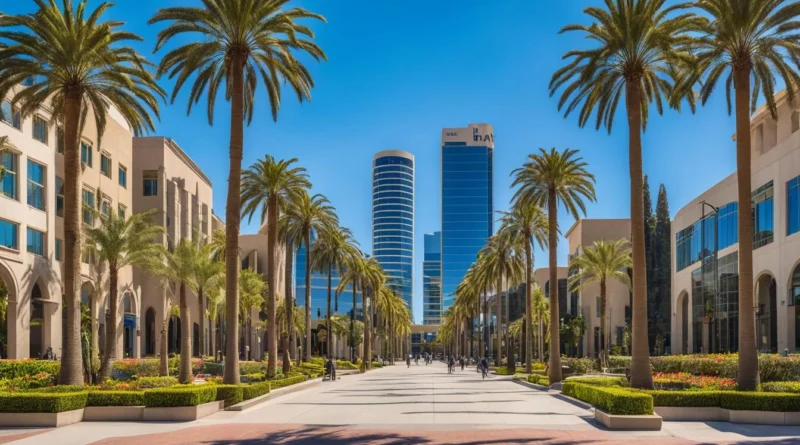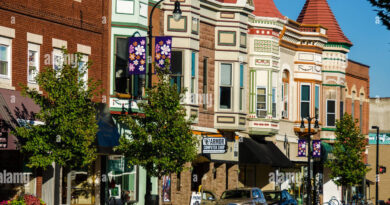History of Irvine California
Irvine, California, is a thriving city known for its master-planned communities, top-rated schools, and booming tech industry. However, the history of Irvine is a rich tapestry that spans centuries, from its early days as part of vast Spanish land grants to its transformation into one of the most meticulously planned cities in the United States. This article delves into the history of Irvine, exploring the key events, figures, and developments that have shaped it into the modern, vibrant city we know today.
The Early Days: Native American Inhabitants and Spanish Colonization
Long before European settlers arrived, the area that is now Irvine was home to Native American tribes, primarily the Gabrielino (Tongva) and Juaneño (Acjachemen) people. These tribes lived in small villages along the region’s rivers and coasts, thriving on the area’s abundant natural resources. They engaged in hunting, fishing, and gathering, and their culture was deeply connected to the land.
Spanish Land Grants
In the late 18th century, Spanish explorers and missionaries began to arrive in California, leading to the establishment of missions and the spread of European influence. The area that would become Irvine was part of the vast Spanish land grant system, with the land divided into large ranchos. Two significant ranchos in the region were Rancho Santiago de Santa Ana and Rancho San Joaquin, both of which would play critical roles in the future development of Irvine.
The Irvine Ranch: Birth of an Agricultural Empire
The modern history of Irvine begins with the establishment of the Irvine Ranch in the mid-19th century. In 1864, James Irvine, an Irish immigrant and successful businessman, along with partners, purchased the land that would become the Irvine Ranch. Over time, Irvine acquired more land, eventually owning over 110,000 acres, stretching from the Pacific Ocean to the Santa Ana Mountains.
Agricultural Development
Under Irvine’s ownership, the ranch became one of the largest and most successful agricultural enterprises in California. The fertile land was ideal for growing crops such as barley, lima beans, and olives. The ranch was also known for its large herds of cattle and sheep. James Irvine’s success was built on his innovative farming techniques and business acumen, and the ranch quickly became a cornerstone of the region’s economy.
The Irvine Company
Following James Irvine’s death in 1886, his son, James Irvine II, took over the management of the ranch. He founded The Irvine Company in 1894 to manage the vast landholdings more effectively. Under his leadership, the ranch continued to prosper, and The Irvine Company began to play a more significant role in the development of the region. The company’s focus on careful land management and long-term planning would become a hallmark of Irvine’s development.
The Transformation from Ranch to Planned City
The most significant transformation in Irvine’s history occurred in the mid-20th century, as Southern California experienced rapid growth and urbanization. Recognizing the potential for development, The Irvine Company, under the leadership of Myford Irvine (James Irvine II’s son), began to transition the ranch from agriculture to urban development.
The University of California, Irvine (UCI)
A major catalyst for Irvine’s urban development was the decision by the University of California to establish a new campus in Orange County. In 1959, The Irvine Company sold 1,000 acres of land to the University of California for the creation of what would become the University of California, Irvine (UCI). The establishment of UCI was a turning point, attracting both residents and businesses to the area and laying the foundation for Irvine’s growth as an educational and cultural hub.
The Master Plan
In 1960, William Pereira, a renowned architect and urban planner, was commissioned by The Irvine Company to design a master plan for the development of the Irvine Ranch. Pereira’s plan envisioned a carefully planned city with a balance of residential, commercial, and industrial areas, interconnected by a network of roads, parks, and green spaces. The plan also emphasized the preservation of natural landscapes, with large portions of land set aside for parks and open spaces.
Incorporation and Rapid Growth
Irvine was officially incorporated as a city on December 28, 1971. From its inception, the city adhered closely to Pereira’s master plan, which guided its growth and development. The plan’s emphasis on sustainability, quality of life, and community amenities made Irvine an attractive place to live and work. Over the following decades, Irvine grew rapidly, with new residential neighborhoods, shopping centers, and business districts springing up across the city.
Irvine in the Late 20th Century: A Hub for Innovation and Education
As Irvine expanded, it became increasingly known for its educational institutions, technology companies, and high quality of life. The presence of UCI, combined with excellent public schools, made Irvine a center for education in Southern California. The city’s well-educated population and business-friendly environment attracted a growing number of technology and biomedical companies, leading to the development of the Irvine Spectrum, a major business and retail complex.
Irvine Spectrum
The Irvine Spectrum, developed by The Irvine Company in the 1980s and 1990s, is one of the most significant commercial developments in the city’s history. The complex includes office buildings, retail stores, restaurants, and entertainment venues, and it quickly became a hub for high-tech companies. The Irvine Spectrum has played a key role in establishing Irvine as a center for innovation and technology.
Education and Research
In addition to UCI, Irvine is home to several other higher education institutions, including Concordia University Irvine and Irvine Valley College. The city’s commitment to education and research has made it a leader in fields such as engineering, computer science, and biomedical research. UCI’s research initiatives and partnerships with local industries have further strengthened Irvine’s reputation as a hub for innovation.
Irvine Today: A Model of Urban Planning and Sustainability
Today, Irvine is celebrated as one of the most successful examples of a master-planned community in the United States. The city consistently ranks among the best places to live in the country, thanks to its excellent schools, low crime rate, and abundant parks and recreational facilities. Irvine’s commitment to sustainability and environmental stewardship continues to guide its development.
Green Spaces and Environmental Preservation
One of the most distinctive features of Irvine is its extensive network of parks, green spaces, and preserved natural areas. Nearly one-third of the city’s land is dedicated to parks, open spaces, and trails, providing residents with ample opportunities for outdoor activities. The city’s commitment to preserving natural landscapes is evident in areas like Bommer Canyon and the San Joaquin Wildlife Sanctuary, which offer a glimpse of Irvine’s natural beauty.
Sustainable Development
Irvine has also been a leader in sustainable development, with initiatives focused on energy efficiency, water conservation, and reducing greenhouse gas emissions. The city’s planning policies encourage the use of renewable energy, green building practices, and sustainable transportation options. Irvine’s commitment to sustainability has made it a model for other cities seeking to balance growth with environmental responsibility.
Cultural Diversity and Community
Irvine’s population has grown rapidly over the past few decades, and the city is now home to a diverse and multicultural community. This diversity is reflected in the city’s cultural festivals, international cuisine, and vibrant arts scene. Irvine’s residents enjoy a high quality of life, with access to top-rated schools, world-class healthcare, and a wide range of recreational and cultural activities.
The Future of Irvine: Continued Growth and Innovation
Looking ahead, Irvine’s future is shaped by its commitment to innovation, sustainability, and community. The city continues to attract new businesses, residents, and visitors, drawn by its thriving economy, educational opportunities, and high standard of living. As Irvine evolves, it remains true to the principles of careful planning and environmental stewardship that have guided its development since its inception.
Ongoing Development and Innovation
Irvine’s growth shows no signs of slowing, with ongoing development in areas like the Irvine Spectrum and the Great Park Neighborhoods. The city is also focused on fostering innovation through initiatives like the Irvine Technology Center, which supports startups and tech companies. As Irvine continues to expand, it aims to maintain its reputation as a leader in sustainable urban development and a hub for technology and education.
Challenges and Opportunities
As with any growing city, Irvine faces challenges, including managing traffic congestion, maintaining affordable housing, and balancing development with environmental preservation. However, the city’s strong planning foundation, community engagement, and commitment to innovation provide a solid framework for addressing these challenges and seizing future opportunities.
Conclusion
The history of Irvine, California, is a story of transformation—from a sprawling ranch to a meticulously planned urban community. Over the centuries, Irvine has evolved from a rural agricultural landscape to a thriving, modern city known for its quality of life, innovation, and environmental stewardship. As Irvine looks to the future, it continues to build on its rich history, guided by the principles of careful planning, sustainability, and community that have defined it for generations.
Discover more from City Towner
Subscribe to get the latest posts sent to your email.




